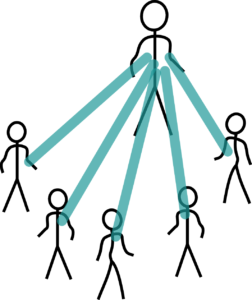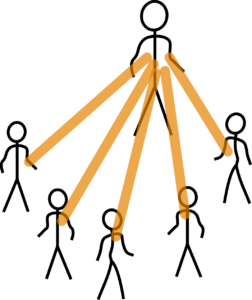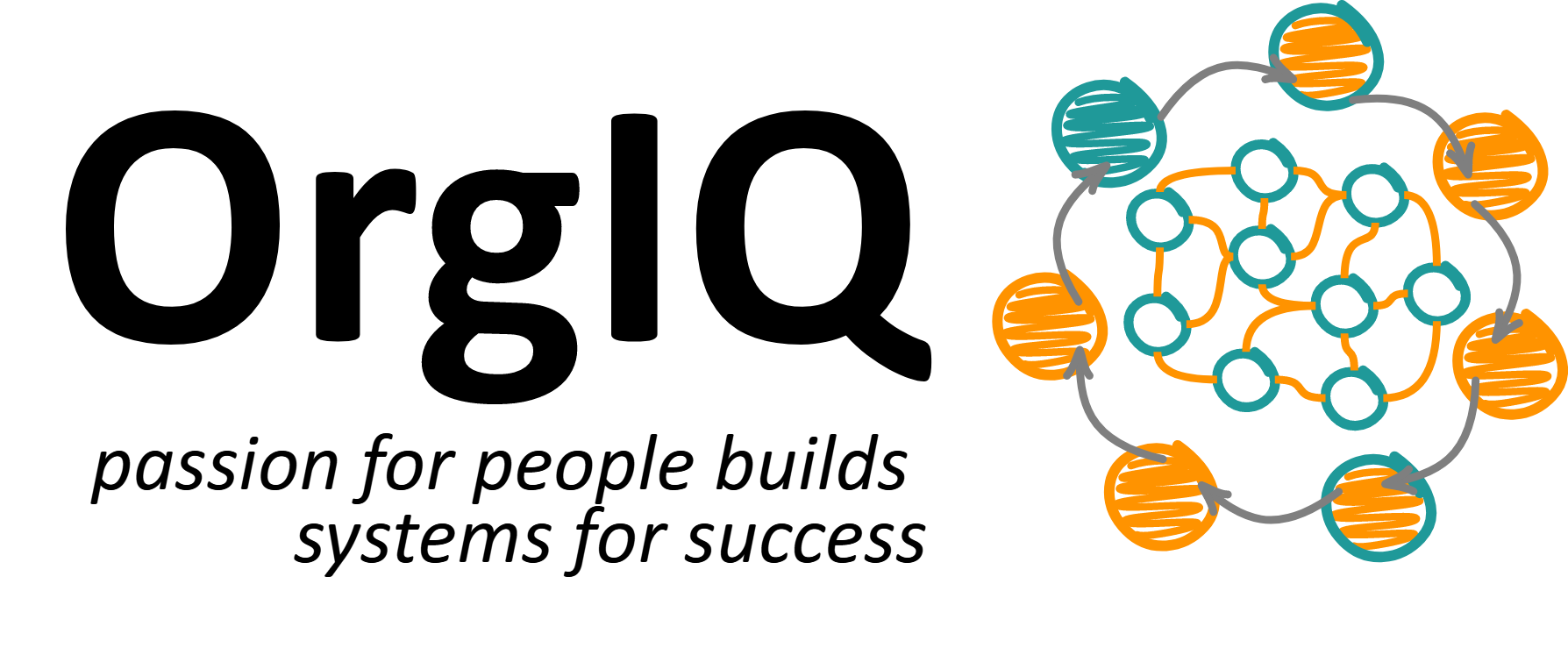OrgIQ is all about understanding and switching perspective. So how do we see our teams? What is our perspective as team member or – in case there is a hierarchy – as management?

This might be the simplest perspective. As management I pass information and orders. And receive the reporting. This visible and controllable contact is shown in teal.
This might be a true and realistic representation, but shows nothing of the relationship level. But the assumption might be something like that.

We just assume that the trust will follow the commands. For display we use here orange for the invisible trust-based relationships. The thickness of the lines gives the amount of trust; wider means more trust.
This picture gives a simple model of an organization, assuming that every member of the team hast the same amount of trust for management. This is easy to assume and draw, but it is not really realistic. Human nature works different.

We hear often about the “loneliness of leadership”. This is a myth. Leaders are not lonely, because they are surrounded by followers, who choose to follow them.
Sometimes we have “the loneliness of management”, but this is actually only a symptom of the alienation between the roles of management and experts. This alienation is the source for unhappiness, resentments, and huge costs. And yes, even with this we are still successful and make money. But nevertheless, this is sad for both sides. And it can be avoided and repaired.
But looking at the picture above, the main fallacy is that I see relationships role based. This is never true. Trust doesn’t follow hierarchies nor orders. Trust – and therefore relationships – are a deeply personal element that needs to be build.

In here we come to the complexity of all social groups. We find it in families and teams. We have no even distribution of relationships. Every connection is individual and changing over time. Sometimes slow and sometimes fast. Depending on the maturity of the people, it can look different, when I have finished the drawing.
But there are two other points concerning the complexity: First, what we show here as a model is in the real life never visible. I can assume how the relationships between people are, but I never know. Furthermore, each relationship has two directions, and they are most of the time also different.
The purpose of the picture was to look confusing. And it’s just six people. Try to draw something like that for 70, 183, 3976, or 123.783.
It’s just not possible. We can’t draw it anyway. But we can know and understand that it’s there. And we can use it. And we can help the people (including us) that everyone has the tools to see his or her personal network. We don’t need the controllable full view. We just need to know where and how my relations are. And have a model to put it into words.
Takeaways
Look at the alienation in your “system”. Team, organizational unit, family, … wherever you are. Start to see and measure the alienation between elements. Use a scale from 1 to 10 (10 is worst).
Learn about trust. Trust is tightly connected with vulnerability, openness, and authenticity. You can start with the talk from Brené Brown. Understand and measure the trust you have and experience on a scale from 1 to 10 (10 is best).
While alienation has a fixed end (e.g., ghosting, which happens in all types of systems), trust has none. What you assume today as a 10 in trust, might look like a 3 in a few years. And that is the really good news for today.

Leave a Reply